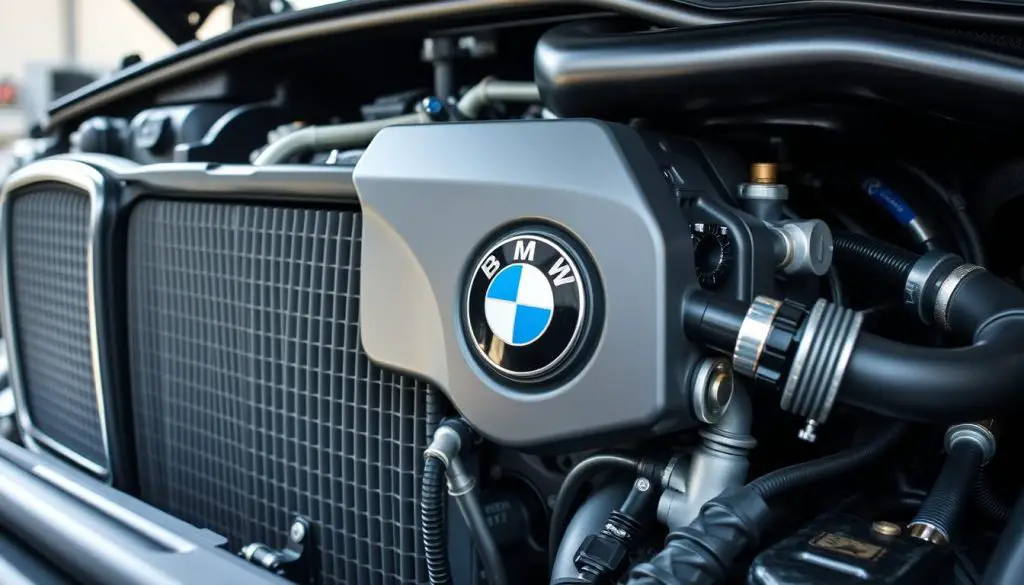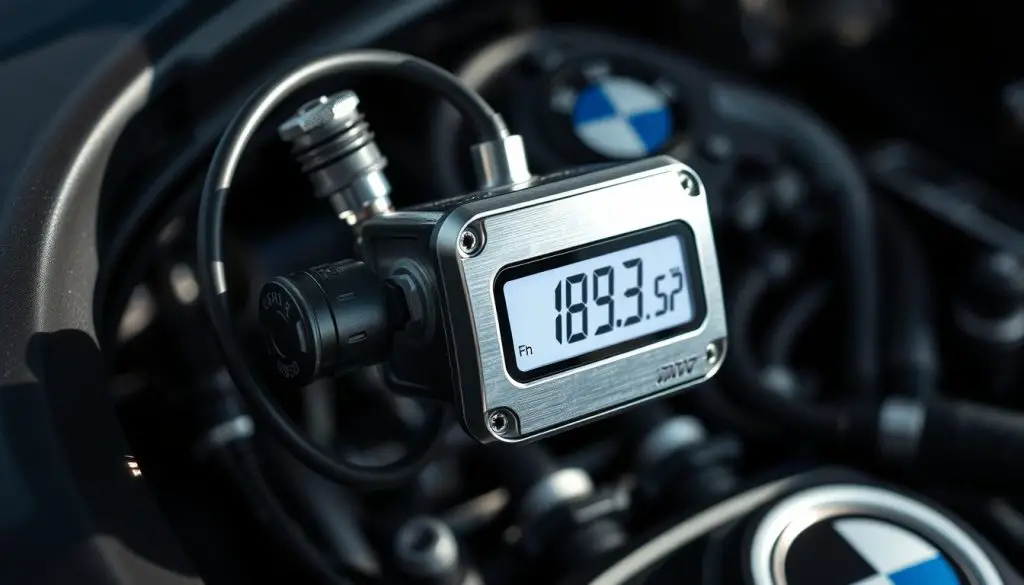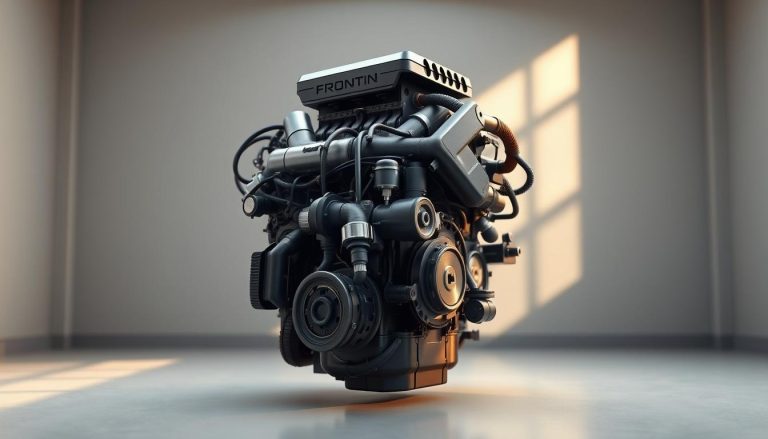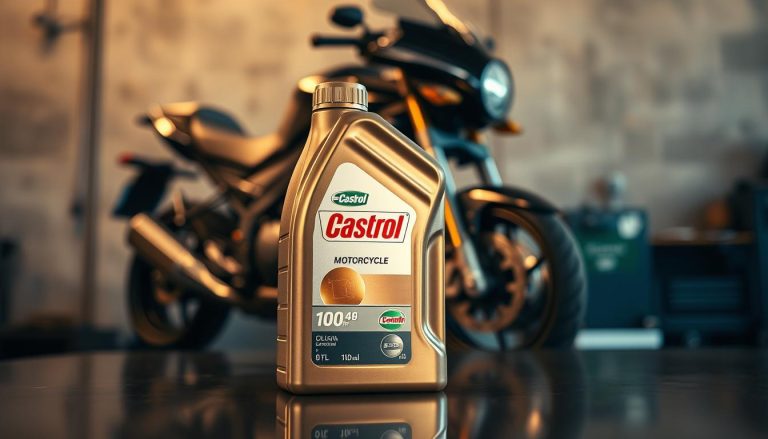The BMW coolant light cycling on and off can be a concerning issue for many vehicle owners. This phenomenon often indicates a problem within the BMW cooling system, which is crucial for maintaining the optimal engine temperature.
When the coolant light cycles on and off, it may signal a range of potential issues, from simple problems like a malfunctioning sensor to more complex faults within the cooling system itself. Understanding the causes and implementing the appropriate fixes is essential to prevent engine damage and ensure the longevity of your vehicle.
This article aims to provide a comprehensive guide on diagnosing and fixing the coolant light issues. By the end of this guide, readers will have a clear understanding of how to address the problem effectively.
Key Takeaways
- Common causes of the BMW coolant light cycling on and off
- Step-by-step guide to diagnosing the issue
- Effective fixes for coolant light problems
- Prevention tips to avoid future issues
- Importance of maintaining the BMW cooling system
Understanding Your BMW’s Coolant Warning System
Grasping the intricacies of your BMW’s coolant warning system is paramount for the preservation of your vehicle’s integrity and the avoidance of exorbitant repair costs. This system, a cornerstone of engine health, vigilantly monitors both temperature and coolant levels, alerting the driver to impending malfunctions before they escalate into critical issues.
What the Coolant Light Indicates
The illumination of the coolant light on your BMW’s dashboard serves as a harbinger of either a coolant level anomaly or a cooling system malfunction. This could manifest as a coolant level depletion or a defect within the cooling apparatus, such as a leak or a dysfunctional component. For a comprehensive elucidation of dashboard symbols, refer to our detailed guide on BMW dashboard symbols and meanings.

How the BMW Cooling System Works
The BMW cooling system is meticulously engineered to maintain the engine’s temperature within a safe operational range. This system encompasses critical components such as coolant, water pump, thermostat, and radiator. The coolant, acting as a heat absorber, transfers engine heat to the radiator, where it is efficiently dissipated. A functioning cooling system is indispensable for the sustained performance and longevity of your BMW.
Normal vs. Abnormal Light Behavior
Under certain conditions, such as extreme temperatures, it is normal for the coolant light to flicker or briefly illuminate. Yet, if this light persists or flashes with increased frequency, it signals an abnormal condition necessitating immediate attention. Disregarding this warning can precipitate severe engine damage.
Risks of Ignoring the Warning
Disregarding coolant system malfunctions can culminate in engine overheating, a scenario that may necessitate expensive repairs or even a complete engine replacement. The perils of neglecting the coolant warning are substantial, underscoring the imperative to diagnose and rectify issues expeditiously.
BMW Coolant Light On and Off: Reasons and Fixes for Cycling
The cycling of the coolant light on your BMW dashboard signals a critical need for immediate intervention to avert engine damage. The coolant system’s role in maintaining the engine’s optimal temperature is paramount, and any malfunction can precipitate severe consequences.
Low Coolant Level Issues
The cycling of the coolant light is frequently attributed to low coolant levels. This deficiency can stem from leaks or excessive consumption. Regular monitoring of the coolant level and timely replenishment can mitigate this problem. Persistent low levels necessitate a thorough examination of the system for leaks.
Faulty Coolant Level Sensor
A faulty coolant level sensor can also precipitate the malfunctioning of the coolant light. This sensor is pivotal in monitoring the coolant level and transmitting this information to the dashboard. An erroneous signal from a faulty sensor can lead to the light’s erratic behavior. Replacement of the sensor is often the solution to this issue.

Thermostat Malfunction
The thermostat is instrumental in regulating the engine’s temperature. A malfunctioning thermostat can induce the coolant light’s cycling, indicating a potential cooling system malfunction. Thermostat replacement is typically the corrective measure for this problem.
Water Pump Failure
Water pump failure is another critical issue that can cause the coolant light to cycle. The water pump’s responsibility is to circulate coolant through the engine. Failure to do so can result in overheating, triggering the coolant light. Inspecting and, if necessary, replacing the water pump is imperative.
Air Pockets in the Cooling System
Air pockets within the cooling system can also contribute to the coolant light’s cycling. These pockets can impede coolant circulation, leading to temperature fluctuations. The removal of air pockets through cooling system bleeding can rectify this issue.
Electrical Issues and Wiring Problems
Occasionally, the problem may not reside within the cooling system but rather in electrical issues or wiring problems. Faulty wiring or connections can disrupt the coolant light’s functionality. A thorough inspection of the wiring and connections for damage or corrosion, followed by necessary repairs or replacements, can resolve the issue.
In conclusion, the cycling of the BMW coolant light can stem from a variety of causes, ranging from simple issues like low coolant levels to more complex problems such as water pump failure. Accurate identification and resolution of the underlying cause are crucial to prevent engine damage.
Diagnosing Your BMW’s Coolant System Issues
Diagnosing coolant system issues in your BMW necessitates a methodical approach. This entails employing the appropriate tools, adhering to a logical sequence, and recognizing the prevalent pitfalls within the diagnostic process.
Tools You’ll Need for Proper Diagnosis
To effectively diagnose coolant system issues, a selection of essential tools is imperative. These include a coolant tester, a multimeter for electrical assessments, and BMW-specific diagnostic software.
- Coolant tester for verifying the coolant’s freeze point and condition
- Multimeter for evaluating electrical circuits and sensors
- BMW-specific diagnostic tools for accessing the vehicle’s onboard computer
Checking Coolant Levels Safely
Verifying the coolant level is a straightforward task, yet it must be executed with caution. Prior to opening the coolant reservoir cap, ensure the engine has cooled down.
Safety Precautions:
- Never open the coolant reservoir cap when the engine is hot
- Utilize protective gloves and eyewear
Inspecting for Leaks and Damage
A visual inspection is indispensable for identifying leaks or damage within the coolant system. Examine for signs of leakage around the radiator, hoses, and water pump.
Testing the Coolant Sensor
The coolant sensor is pivotal in monitoring the coolant level. Testing it entails evaluating its electrical resistance and confirming its proper connection.
Using BMW-Specific Diagnostic Tools
BMW-specific diagnostic tools offer detailed insights into the coolant system, facilitating the identification of issues. These tools can decipher diagnostic trouble codes (DTCs) stored in the vehicle’s onboard computer.
Common Diagnostic Codes Related to Cooling Issues
Understanding prevalent DTCs associated with the cooling system is crucial for diagnosing problems. Below is a table summarizing some common codes:
| Code | Description |
|---|---|
| E0101 | Coolant level low |
| E0123 | Coolant temperature sensor malfunction |
| E0145 | Coolant leak detected |
By adhering to these steps and utilizing the correct tools, you can efficiently diagnose and rectify coolant system issues in your BMW.
Step-by-Step Fixes for BMW Coolant Light Problems
To address the BMW coolant light issue, one must first identify the common causes and then implement the necessary fixes. The coolant light can signal a variety of problems, ranging from simple issues like low coolant levels to more complex malfunctions such as a faulty coolant sensor or thermostat malfunction.
Refilling Coolant Properly
One of the simplest remedies is refilling the coolant. It is, though, imperative to execute this task correctly to avert further complications.
Choosing the Right BMW Coolant
BMW advocates for the use of a specific coolant type. Utilizing an inappropriate type can precipitate compatibility issues and potentially harm the engine. Always consult your owner’s manual or seek professional advice to ascertain the correct coolant to use.
Mixing and Filling Procedure
The coolant must be mixed with water according to the manufacturer’s guidelines before filling. It is crucial to fill the system gradually to prevent air pockets from forming. For more detailed guidance, refer to this resource on coolant warning lights.
Bleeding Air from the System
Air pockets in the cooling system can cause the coolant light to flicker. Bleeding the system is essential to remove these air pockets.
Manual Bleeding Method
The manual bleeding method entails opening the bleed valves on the cooling system to expel the air. This process necessitates caution as it involves working with potentially hot components.
Using the BMW Bleeding Procedure
BMW offers a specific bleeding procedure for their vehicles, which can be found in the repair manual. Adherence to this procedure ensures that the cooling system is properly bled without causing damage to the vehicle’s components.
Replacing a Faulty Sensor
If the coolant sensor is faulty, it may send incorrect signals to the dashboard, causing the coolant light to malfunction. Replacing the sensor involves locating the faulty sensor, disconnecting it, and installing a new one.
Thermostat Replacement Guide
A faulty thermostat can also trigger the coolant light. Replacing the thermostat involves draining the coolant, removing the thermostat housing, and installing a new thermostat. This process is relatively straightforward but requires careful handling to avoid damaging the surrounding components.
Water Pump Inspection and Replacement
The water pump is a critical component of the cooling system. If it fails, it can cause the coolant light to come on. Inspecting the water pump for signs of leakage or wear and replacing it if necessary is crucial.
When to Seek Professional Help
While many coolant light issues can be resolved with DIY fixes, some problems require professional attention. If you’re unsure about the diagnosis or feel uncomfortable performing the repairs, it’s best to consult a professional mechanic.
Conclusion
The imperative of addressing the BMW coolant light issue cannot be overstated, as it directly impacts the vehicle’s health. Grasping the underlying causes and applying the corrective measures detailed in this discourse ensures the coolant system’s optimal functionality.
Adherence to a regimen of coolant system maintenance is paramount in averting potential malfunctions. This entails diligent monitoring of coolant levels, thorough inspections for any signs of leakage, and the execution of DIY coolant repairs when indicated.
Embracing a proactive stance towards BMW coolant light fix and upkeep not only spares you from exorbitant repair costs but also guarantees prolonged vehicular performance.
Regardless of your experience level in car maintenance, the insights derived from this guide empower you to confront coolant-related challenges with assurance.
FAQ
What does it mean when my BMW coolant light is cycling on and off?
The cycling of the coolant light on your BMW signifies a malfunction within the cooling system. This could be due to insufficient coolant levels, a faulty coolant level sensor, or other underlying issues that necessitate immediate attention.
Can I drive my BMW with the coolant light on?
Driving your BMW with the coolant light illuminated is not advisable. Such action can precipitate engine overheating, potentially resulting in severe damage to the engine.
How do I check the coolant level in my BMW?
To verify the coolant level in your BMW, first locate the coolant reservoir. Ensure the engine is at a cool temperature. Then, inspect the level against the minimum and maximum marks on the reservoir. For precise instructions, refer to your owner’s manual.
What type of coolant should I use in my BMW?
BMW stipulates the use of a coolant that meets their specific requirements. To ensure compatibility, consult your owner’s manual or seek guidance from a dealership or certified mechanic.
Can a faulty thermostat cause the coolant light to cycle on and off?
Affirmatively, a malfunctioning thermostat can disrupt the cooling system’s functionality, prompting the coolant light to intermittently illuminate.
How do I bleed air from my BMW’s cooling system?
To eliminate air pockets from your BMW’s cooling system, employ BMW’s designated bleeding procedure or a manual method. For detailed guidance, consult a professional or refer to a comprehensive repair manual.
What are the risks of ignoring the coolant warning light?
Neglecting the coolant warning light can expose your engine to overheating, leading to potential engine damage and substantial repair costs. Prompt resolution of the issue is imperative.
Can I replace the coolant sensor myself?
Replacing the coolant sensor is feasible as a DIY endeavor, provided you possess the requisite tools and adhere to the correct procedure. If in doubt, it is advisable to seek professional assistance from a certified mechanic.
How often should I check my BMW’s coolant level?
Regularly inspecting your BMW’s coolant level is advisable, ideally during routine maintenance or whenever the coolant light flickers. This practice ensures the longevity and optimal performance of your vehicle’s cooling system.


